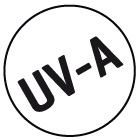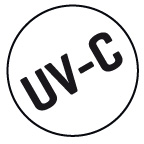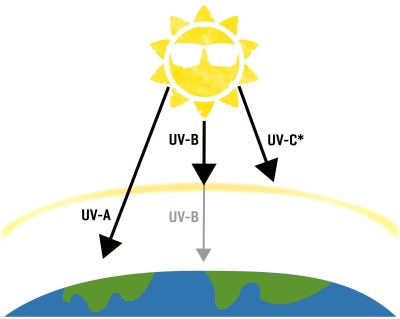UV protection - protect your employees from the sun
Especially in spring and summer, we enjoy it when the sun finally shines again after the dark winter months. However, we often underestimate the power of the sun in the first few days - a mistake with serious consequences!
Our skin is less pigmented after the sunless months and is therefore particularly sensitive to light. It is also important to be careful with the climate, especially in spring, as the much thinner ozone layer is less able to filter out aggressive UV radiation at this time of year.
When working outdoors, where constant contact with the sun cannot be avoided, protection from UV radiation is a very important issue. Appropriate precautions must be taken to ensure the health and safety of employees.

Enjoy the sun with WERO
The danger posed by UV radiation to the eyes and skin is no reason to hide from the sun. Quite the opposite: with the right UV protection on your skin, you can enjoy being outdoors without suffering any damage. Our range includes various sun protection products (sun cream, sun spray, UV protection foam) as well as UV protection goggles for the eyes. We also offer workwear with UV protection specifically for sun protection in the construction industry.
UV radiation - the ultraviolet culprit
UV protection (or UV radiation protection) is defined as any measures taken to protect against the harmful effects of ultraviolet radiation (UV radiation). Although UV radiation in the form of sunlight is known to promote vitamin D production in the body and initially gives us a pleasant feeling on our skin, we should be aware of the effects that radiation can have on our skin.
Invisible danger for eyes and skin
One of the reasons why radiation poses such a danger is that it cannot be seen or perceived by any other sensory organ. Possible damage is usually only realised after it has occurred. It is important to realise that UV-induced damage to the skin occurs long before sunburn appears. In general, the effects of UV radiation can be divided into short-term (acute) and long-term (chronic) effects. While short-term effects are reflected in the form of sunburn or conjunctivitis, long-term effects are defined by premature skin ageing, skin cancer or even cataracts.
The longer the wavelength of the UV rays, the deeper they penetrate our skin and can cause various types of damage:
 |
Sun allergy, skin ageing, high risk of melanoma, damage to the retina |
 |
Sunburn, cell damage to the epidermis, DNA damage, skin cancer, conjunctivitis |
 |
Sunburn, weakening of the immune system, DNA damage, skin cancer, blistering, conjunctivitis |

* Natural UV-C radiation is filtered by the ozone layer; however, it is released during technical processes such as electric welding
Four steps for perfect sun protection
 |
1. Avoid direct sunlight If possible, avoid direct sunlight and the midday sun. Shade your work areas and do not stay in direct sunlight longer than necessary. |
 |
2. Sun protective clothing Expose as little skin as possible to direct sunlight. Create an effective barrier between UV radiation and your skin by wearing UV-proof clothing and headgear, preferably also covering your ears and neck. |
 |
3. Sun protection products Apply a sun protection product with at least SPF 30 to uncovered areas of skin approx. 15 minutes before you are exposed to the sun's rays. Focus particularly on the so-called "sun terraces" such as the bridge of the nose, ears and shoulders. Repeat this process regularly, especially after cleansing your skin or after heavy sweating. |
 |
4. Sunglasses Wear sunglasses to protect your eyes from harmful UV rays and avoid serious long-term damage. |
